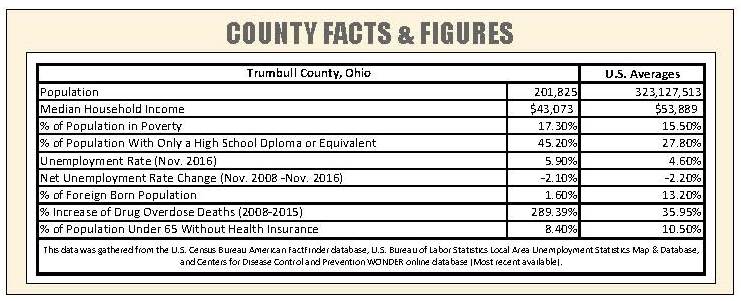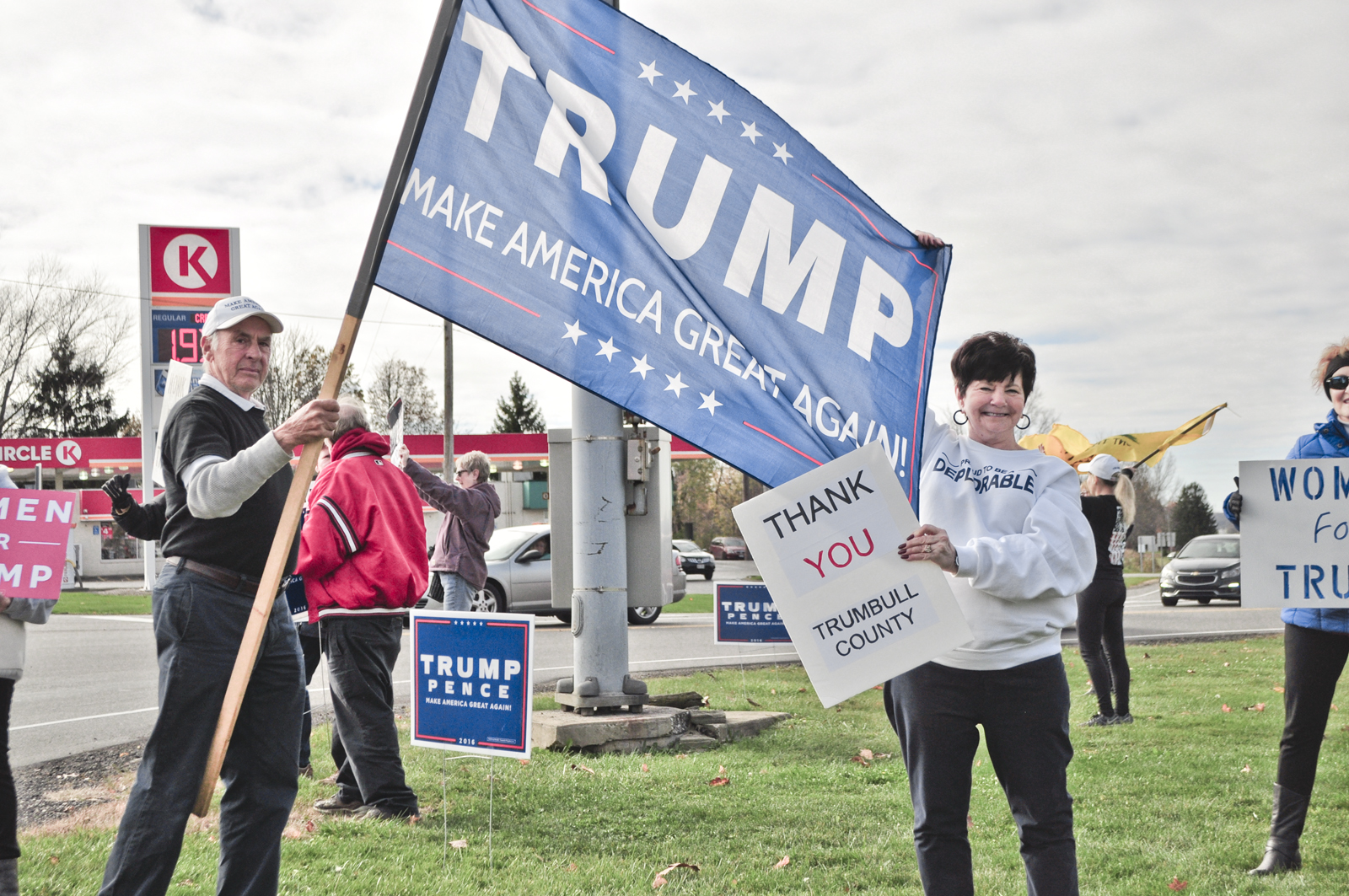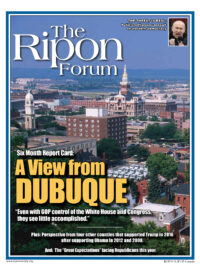“There is nothing to indicate the Trump train is being derailed.”

Trumbull County is very much a working class microcosm of Ohio. To that end, perhaps the most important thing to know about presidential politics in the Buckeye State is that Ohioans always sell their 18 electoral votes to the highest bidder.
Ideological beliefs, economic paradigms, and perspectives on what is good for the national interest are less relevant factors in this state. What Ohioans want to know from candidates is what they will do for Ohio. Will the candidate bring jobs to the state? Will there be greater or lesser federal investment in the Rust Belt? Will Ohio industries be strengthened or weakened if that candidate wins?
In 2016 it was simple. Donald Trump was the candidate Ohioans believed cared about them and was better for their state’s interests. In 2008 and 2012, it was Barack Obama. In those years, the Republican candidates failed to convince Ohioans that they and their policies were good for them. But in 2016, Mr. Trump hit all the right chords.
Rust belt voters were angry in 2016. They were angry that the ruling elites of their country were constantly asking them to make sacrifices without giving them back very much in return. They were tired of being told that they have a moral obligation to save the rest of the world, to have their jobs taken by immigrants, and to have their local industries compete with companies overseas. They were angry about endless wars in the Middle East and free trade agreements that to them only seemed to benefit America’s competitors and America’s wealthy captains of industry.
While education and job re-training may be issues that resonate across the country, in the Youngstown area they mostly only symbolize the break-up of families.
In 2008 and 2012, neither John McCain nor Mitt Romney told these voters what they wanted to hear. In the case of McCain, he advocated more of the same pro-immigration and democracy-exporting, nation-building global agenda of the Bush era. The anti-corruption platform of the McCain/Palin ticket also failed to resonate with people who are not necessarily opposed to corruption as long as it serves their own local interests. The colorful and crooked Congressman James Traficant, after all, represented Trumbull County for almost two decades. A region that thrives on federal investments is not likely to champion an end to pork barrel spending. Similarly, Romney failed to realize that these voters are not exactly kept awake at night by the $20 trillion national debt.

In 2000, a Republican was able to win Ohio by promoting a more modest foreign policy agenda. George W. Bush spoke about lessening America’s entanglements in foreign conflicts and did not make advancing human rights an emphasis in his campaign. While on foreign affairs and homeland security his presidency took a very different turn after 9/11, Bush still promoted policies that these voters liked. What particularly resonated with Trumbull County was Bush’s “Stand Up For Steel” plan in 2002, which imposed a tariff on steel imports. Two years later, this measure would help him win the county a second time.
On the Democratic side, both Bill Clinton and Obama spoke directly to white working class voters in their respective campaigns. They especially highlighted the Rust Belt region as vital centers of America’s economic growth. In 2008, Obama focused on this region’s potential in a new “green energy” sector. Obama also made sure to mention the city of Youngstown in his 2013 State of the Union address, citing it as home to the first manufacturing innovation institute.
Unlike Mrs. Clinton, President Obama tried to appeal to Trumbull and Mahoning County voters by convincing them that their region is an ideal center of tech production. When Mrs. Clinton spoke in Youngstown, she made no effort to highlight her predecessor’s specific focus on this region. She spoke in general terms about job creation and unions, but she did not tailor her remarks to the Youngstown area. She spoke of infrastructural updates that are irrelevant to these landlocked counties, such as “tunnels and ports and water systems.”
And while education and job re-training may be issues that resonate across the country, in the Youngstown-Warren area, they mostly only symbolize the break-up of families. No one in these counties wants their children to learn skills that could only be used if they left the area. Unless candidates present specific plans to voters that will create jobs in these counties and economically revitalize their communities, there is no chance of those candidates winning their votes.

When then-candidate Trump spoke in March 2016 at a well-attended rally at the Youngstown-Warren Airport, he promised specific improvements for the region, including a 35% tariff. The abandoned steel mills, he said, will be running again when he is president. In his August 2016 speech at Youngstown State University, he blamed global terrorism on the previous two administrations. His campaign established him as a change agent who will do things differently than what the last 16 years had brought, convincing these voters that electing his opponent would just constitute more of the same. Although he was the Republican Party nominee, he stood for a new independent brand. Like Ronald Reagan before him, he made longtime Democratic Party voters comfortable enough to vote for a Republican, and even excited to do it. He was the businessman, not a politician, who would go to Washington and make their lives great again.
The pro-Trump rallies being held almost weekly on Highway 224 and the enthusiasm for him on local talk radio all indicate that local excitement for Trump has not waned.
Six months into the presidency, the people of Trumbull County apparently still have steadfast faith in him. While national polling puts him into low favorability in national public opinion, the people in the Youngstown area seem to believe that he is working diligently for all the right ends. While there is no local polling, the pro-Trump rallies being held almost weekly on Highway 224, the enthusiasm for him on local talk radio, the Trump signs and bumper stickers that still decorate Trumbull County neighborhoods and cars, and simply the talk of the town in local pubs and pool halls, all indicate that local excitement for Trump has not waned.
His legislative failures in his first six months have not made any difference to them whatsoever. They believe that he is fighting for heartland America against a ruling elite in both parties, the courts, the national media, and the bureaucracies, which they believe are all set out to undermine his presidency. Time will tell if his support diminishes in this region, but for the time being, there is nothing to indicate that the Trump train is being derailed.
Adam L. Fuller, Ph.D, is an Assistant Professor in the Department of Politics & International Relations at Youngstown State University.




